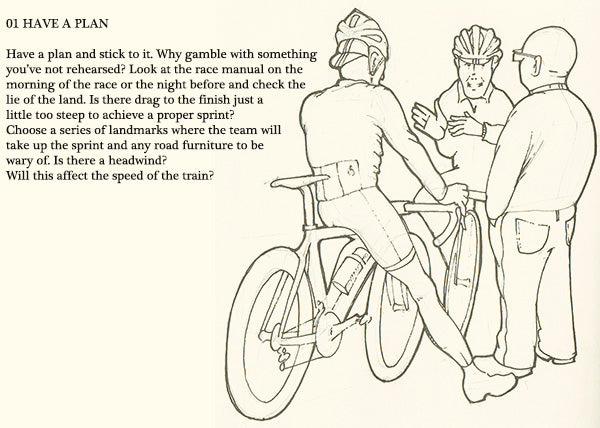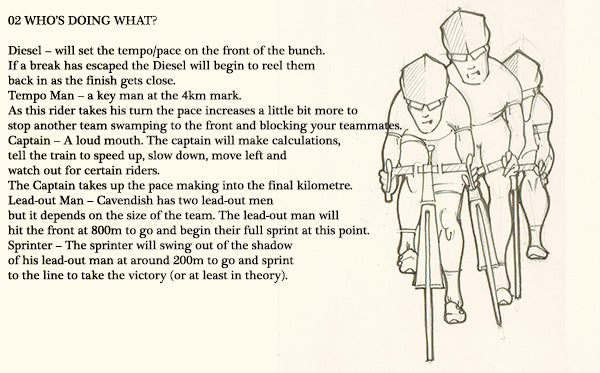Before 'Cav' and before Cipollini there was Jean-Paul Van Poppel of PDM and Eric Vanderarden of Panasonic pro cycling. Their lead-out trains went head to head in the 1980s to take the sprint stage victories, though back then the trains hadn't become as refined as you see of Cavendish's men today.
It is a tactic that has existed for years and one that every rider needs to be able to execute. In bicycle racing, few displays of teamwork are more dramatic than when a team performs a lead-out, often called a lead-out train. Rapha Condor JLT team DS John Herety, Pro Cyclist Mark Renshaw talk us through.

"Garmin for example, more often than not, they don't use one leader, they try and...they might have Robbie (Hunter) taking Farrar, or Farrar taking Robbie and then they try and mix it up a little bit. But that's why it backfires maybe, they don't commit to one guy", says Mark Renshaw, the former lead-out man for Cavendish.

SHOP THE TIP: Mark Cavendish Autobiography | Mark Cavendish Oakley Glasses
Mark Renshaw explains that a team will take control of the race at the 20km to go mark. "If you look further ahead into the race, 20km to go is usually a good marker for when we want the whole team at the front. Last 20km seems to go pretty fast so we try to get all the guys in a line, all stay together, and you obviously all want to stay to one side. It depends what direction the wind is coming from. We use two or three guys rotating on the front, trying to keep the speed very high at the 20km mark."

SHOP THE TIP: Rapha Condor JLT Jersey

SHOP THE TIP: Oakley Radar Glasses